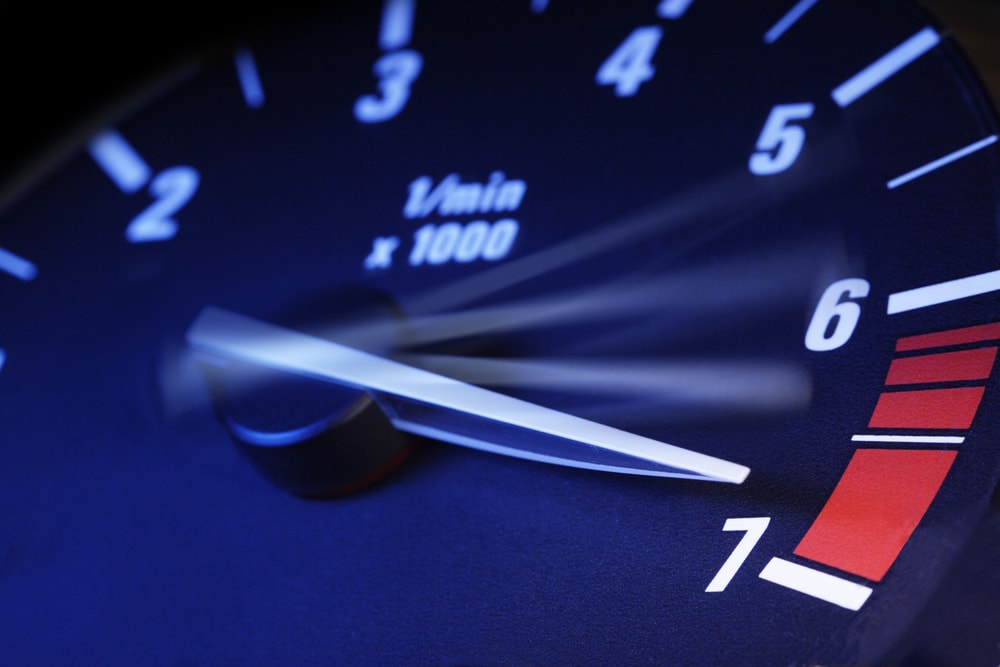Specialist Tips for Preserving and Adjusting Your Tachometer
Specialist Tips for Preserving and Adjusting Your Tachometer
Blog Article
The Significance of a Tachometer in Keeping An Eye On Engine Speed and Performance in Automotive Applications
In the world of automotive design, the tachometer stands as a pivotal instrument in the vehicle driver's arsenal, giving a direct home window right into the internal workings of an automobile's engine. Beyond its function as a plain gauge of transformations per minute (RPM), the tachometer works as an essential device for fanatics and experts alike, supplying real-time insights into engine performance and wellness. Understanding the importance of this tool surpasses surface-level observations, delving right into the complex partnership between engine rate, power outcome, and total driving experience. As we explore the diverse duty of the tachometer in automobile applications, a deeper admiration for its influence on car dynamics and effectiveness begins to arise.
Importance of Keeping Track Of Engine RPM
Monitoring engine RPM, or changes per minute, is an essential element of automobile upkeep and efficiency evaluation. Engine RPM straight correlates with the speed at which the engine's crankshaft rotates, showing exactly how quickly the engine is running.
In addition, keeping an eye on engine RPM is vital for efficiency assessment in auto racing and high-performance automobiles. Keeping ideal RPM degrees is important for achieving peak power outcome and velocity. Racers frequently utilize tachometers to ensure they are operating within the optimal RPM variety for optimum performance. In recap, monitoring engine RPM is not only important for finding problems however likewise for maximizing engine performance in numerous vehicle applications.

Advantages of Real-Time Data
In auto applications, real-time data plays a critical duty in offering instantaneous understandings into the efficiency and problem of the vehicle. By continuously keeping track of various parameters such as engine rate, temperature, fuel consumption, and much more, real-time data uses numerous benefits that add to enhanced performance and safety on the road.
One significant benefit of real-time data is its ability to alert motorists and technicians to any kind of abnormalities or issues quickly. This proactive approach makes it possible for quick recognition of potential problems, allowing for timely treatments to avoid further damage or malfunctions. Additionally, real-time data facilitates efficiency optimization by providing prompt feedback on driving habits and engine performance. Drivers can change their habits in real-time based upon this details to attain better fuel economic climate and lengthen the life-span of their automobile.

In addition, real-time data plays a crucial function in modern vehicle diagnostics, allowing technicians to rapidly diagnose and address malfunctions. This leads to lowered downtime, reduced upkeep expenses, and inevitably, improved general car integrity and durability (tachometer). By using the power of real-time information, automobile stakeholders can make educated choices that favorably affect both the performance and long life of the vehicle
Effect On Gear Shifts
Efficient gear shifts in auto applications considerably influence general performance and driving experience. The tachometer plays a crucial role in enhancing gear changes by giving real-time engine rate data to the vehicle driver. When approaching the redline on the tachometer, it signals the driver to upshift to avoid over-revving the engine and causing prospective damages. On the various other hand, downshifting at the best minute can help preserve the engine in its power band, guaranteeing responsive acceleration when needed.
Moreover, the tachometer aids in accomplishing smoother gear transitions, especially in hand-operated transmissions. By keeping track of engine speed, chauffeurs can perform equipment shifts at the optimum RPM range, decreasing snagging activities and decreasing i loved this endure the transmission parts. This precision on duty changes not just enhances driving comfort Continue yet also adds to fuel performance.
Enhancing Fuel Efficiency
Provided the crucial duty the tachometer plays in maximizing gear changes for performance and engine health, it directly adds to making the most of gas performance in automotive applications. By offering real-time comments on engine rate, the tachometer assists motorists in preserving one of the most efficient RPM array for fuel economy. When chauffeurs consistently check the tachometer and change their driving behaviors appropriately, they can stay clear of unnecessary fuel consumption triggered by over-revving or hauling the engine.
In addition, the tachometer aids motorists determine the most fuel-efficient equipment to be in at any kind of given moment, protecting against the engine from working more difficult than needed. This is particularly crucial during acceleration and travelling, where remaining in the best gear can substantially affect gas effectiveness. Furthermore, the tachometer can alert drivers to potential mechanical problems that could be negatively impacting gas economic climate, such as a sliding clutch or a blocked air filter. To conclude, the tachometer functions as a beneficial device in boosting gas efficiency by promoting ideal driving practices and determining locations for improvement in the more helpful hints car's performance.

Maximizing Engine Longevity
The tachometer's function in monitoring engine rate and performance contributes in ensuring the durability of automotive engines. By making use of the tachometer properly, drivers can enhance engine long life with conscious RPM monitoring. Regularly revving an engine too expensive can lead to extreme wear and tear on vital elements, such as the pistons, valves, and bearings. Gradually, this can lead to decreased engine performance and prospective malfunctions. Keeping track of the tachometer permits chauffeurs to remain within the suggested RPM variety for their vehicle, preventing unneeded strain on the engine and extending its lifespan.

Verdict
To conclude, the tachometer plays a critical role in keeping track of engine speed and performance in automobile applications. By supplying real-time data on RPM, it enables effective gear shifts, boosted fuel effectiveness, and made best use of engine long life. This tool is essential for preserving optimal engine efficiency and ensuring the overall functionality of a vehicle.
Report this page